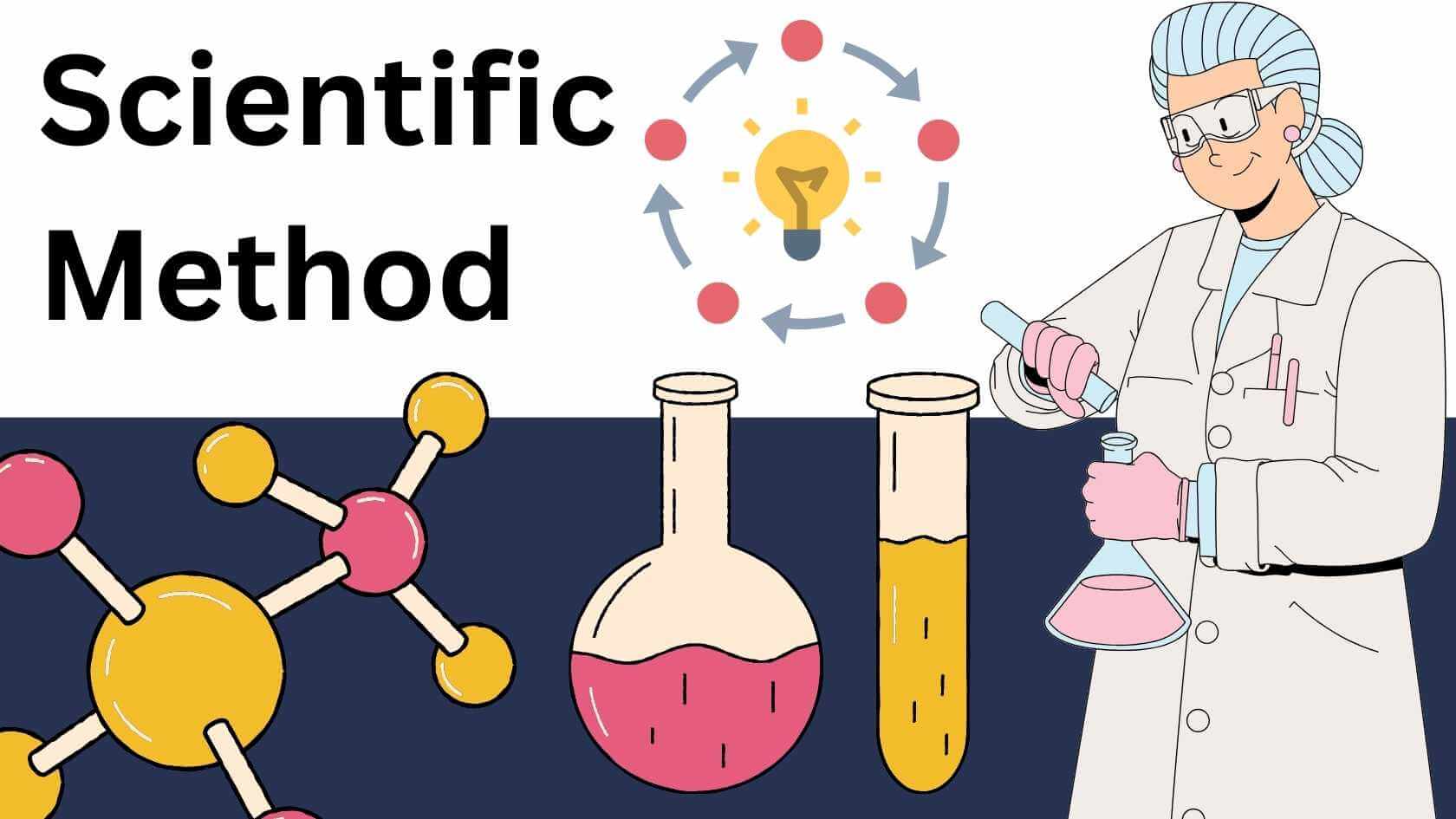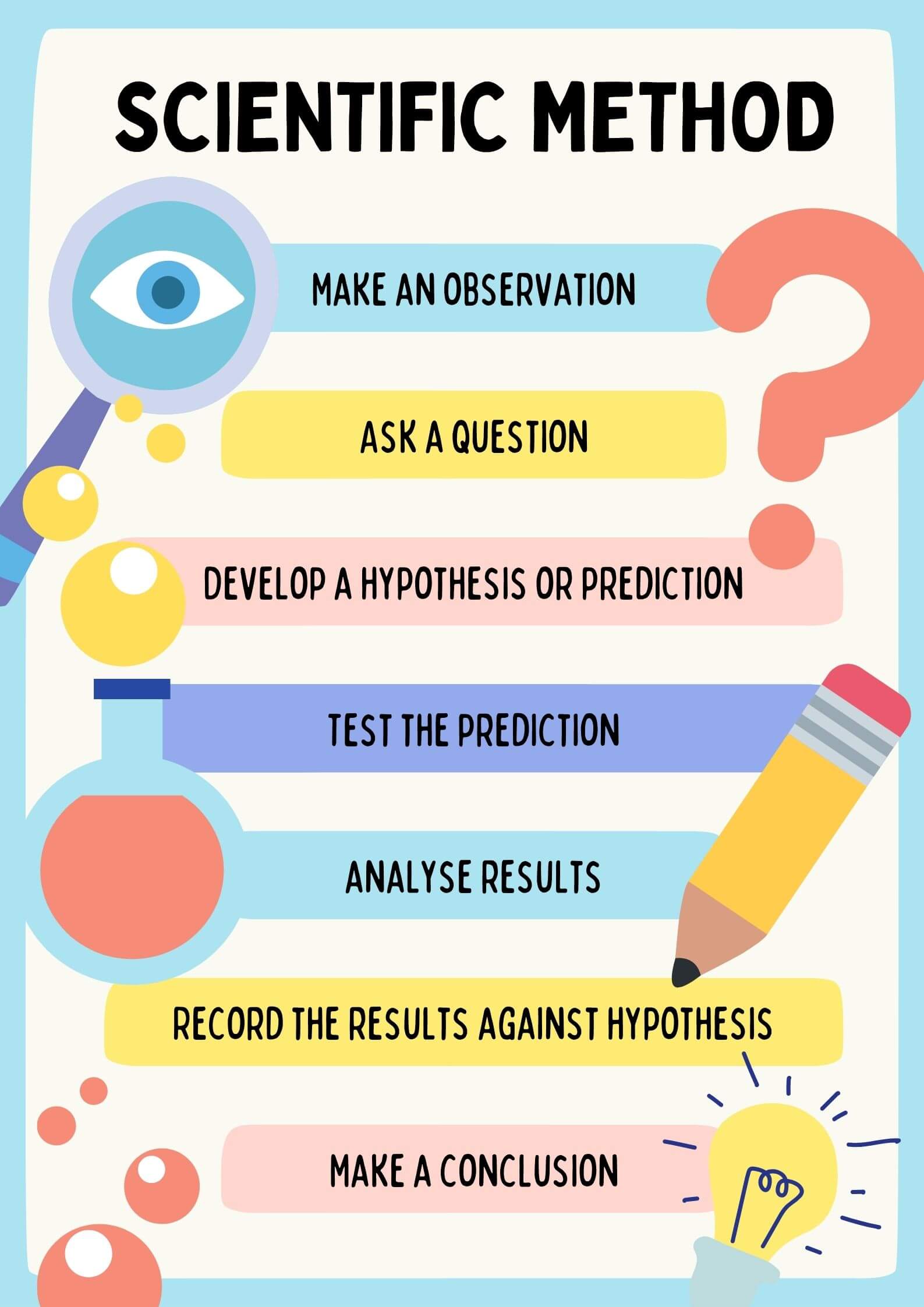Sir Francis Bacon, an English philosopher, developed modern scientific research and scientific methods. He is also known as “the Father of modern science.”
He was influenced by Galileo Galilei and Nicholas Copernicus’ writings throughout his study.
The scientific method is a powerful analytical or problem-solving method of learning more about the natural world.
The scientific method is a combined method, which consists of theoretical knowledge and practical experimentation by using scientific instruments, analysis and comparisons of results, and then peer reviews.

- The scientific method is a procedure that the scientists use to conduct research.
- Scientific investigators play a crucial role in following a series of steps such as asking questions, setting hypothesis to answer questions, performing multiple experiments to confirm the reliability of data/ results, data collection and interpretation, and developing conclusions based on the hypothesis.
Interesting Science Videos
Steps of Scientific Method
There are seven steps of the scientific method such as:
- Make an observation
- Ask a question
- Background research/ Research the topic
- Formulate a hypothesis
- Conduct an experiment to test the hypothesis
- Data record and analysis
- Draw a conclusion
1. Make an observation
- Before asking a question, you need a proper observation to get information about some topic, which may help to identify the question.
- Proper observation in the area of investigation or about something you are interested in is required, whether you recognize it or not.
2. Ask a question
- The scientific method follows a step by asking a question. Based on what you observe, Asking questions starts with Wh- such as What, When, Who, Which, Why, How, Does or Where?
- A question helps to identify a core problem and form a hypothesis. The question should be relatable and specific as much as possible.
Examples:
- Why is this thing happening?
- What is the reason behind this?
- How does this happen?
- Does it need to happen?
3. Background research/ Research the topic
- Background research on the experiment/ topic is necessary to analyze and answer the questions.
- Many scientists are employing various techniques and equipment, such as libraries and Internet research (research papers, articles, journals, etc.), that push how to investigate, design, and understand the experiment.
- In addition, you can learn from other experiences, research, or experiments, which helps you not repeat the same mistakes and be aware of doing things further.
- It helps to predict what will happen in the future. It also helps to understand the theory and background history of the experiment.
4. Formulate a hypothesis
- A Hypothesis is an idea or a guess to explain a specific occurrence, natural event, or particular experience based on prior observation.
- It is another step in the scientific method. A hypothesis allows you to make a prediction. Scientists predict what will be the outcome.
- It outlines the objectives of the experiment, the variables used, and the expected outcome of the experiment. The hypothesis must be either falsifiable or testable. It also answers the previous question.
- A hypothesis needs to be testable by gathering evidence. A hypothesis needs to be testable to perform an experiment, whether the evidence supports the hypothesis or not.
5. Conduct an experiment to test a hypothesis
- After formulating a hypothesis, you must design and conduct an experiment. Experiments are the process of investigations to prove or disprove the hypothesis.
- Two variables play a crucial role in conducting experiments to test the hypothesis.
- They are Independent variables (Can be manipulated or controlled by the person, or you can change while experimenting) and dependent variables (one you measure, which may be affected by the independent variable).
- They both are the cause and effect. The dependent variable is dependent on the independent variable.
- All the variables must be under control to ensure that they have no impact on the result.
- You can also set another type of hypothesis, such as a “null hypothesis” or “no difference” hypothesis.
Example:
There is no difference in the intense rain and crop destruction.
6. Data Record and Analysis
- During the experiment, data needs to be recorded and collected. Data is a set of values. It should be represented quantitatively (measured in numbers) or qualitatively (an explanation of outcomes).
- After the data collection, you can interpret the data by drawing a chart or constructing a table or graph to show the result.
- After the data representation, you can analyze or interpret the data to understand the meaning of the data.
- You can compare the results with other experiments visually or in graphics form.
7. Draw a Conclusion
- Your Conclusion always showcases whether the experiments support the prediction and hypothesis or contradict.
- Scientists will analyze the experiment’s results and develop a new hypothesis based on the data they collect if they discover that their experiment did not support their hypothesis or that their prediction is not supported.
- While we conclude the experiment, all the collected results will be analyzed, which helps to interpret the hypothesis.
- Did your experiments support or reject your hypothesis?
- Does your hypothesis prove or disprove your study?
- Did your results show a strong correlation?
- Was there any way to change the thing to make a better experiment?
- Are there things that need to be studied further?
- If your hypothesis is supported, then that is fine. You can carry on.
- But If not, do not try to manipulate the result or try to change the result.
- Keep the result to its original form, or you can further repeat the experiment to get better results.

Application of Scientific Method
- It is essential in many sectors, such as social sciences, empirical sciences, statistics, biology, chemistry, and physics. It can be used in the laboratory.
- Scientific methods lead to discoveries, innovations, and improvements in various disciplines.
- The scientific method can be used to solve problems, explain the phenomena of the study, and find and test solutions.
- Scientific methods guarantee that the findings are based on evidence, making the study reliable and replicable and allowing research to occur objectively and systematically.
References
- The Editors of Encyclopaedia Britannica. (2024, March 14). Scientific method | Definition, Steps, & Application. Retrieved from https://www.britannica.com/science/scientific-method
- Biology Dictionary. (2020, November 6). Scientific method. Retrieved from https://biologydictionary.net/scientific-method/
- Bailey, R. (2019, August 21). Scientific method. Retrieved from https://www.thoughtco.com/scientific-method-p2-373335
- Buddies, S., & Buddies, S. (2023, August 17). Writing a Science Fair Project research plan. Retrieved from https://www.sciencebuddies.org/science-fair-projects/science-fair/writing-a-science-fair-project-research-plan
- Buddies, S., & Buddies, S. (2024, January 25). Steps of the scientific method. Retrieved from https://www.sciencebuddies.org/science-fair-projects/science-fair/steps-of-the-scientific-method
- Helmenstine, A. (2023, January 1). Steps of the scientific method. Retrieved from https://sciencenotes.org/steps-scientific-method/
- Cartwright, M., & Greer, R. (2023). Scientific method. World History Encyclopedia. Retrieved from https://www.worldhistory.org/Scientific_Method/
- https://www.extension.purdue.edu/extmedia/ID/ID-507-w.pdf
- GeeksforGeeks. (2024, April 18). Applications of scientific methods. Retrieved from https://www.geeksforgeeks.org/applications-of-scientific-methods/

very good